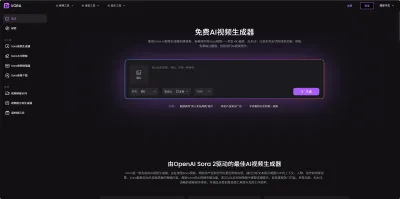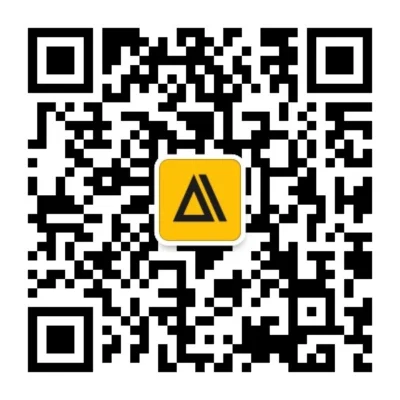PyTracking
A general python framework for visual object tracking and video object segmentation, based on PyTorch.
:fire: One tracking paper accepted at WACV 2024! 👇
- Beyond SOT: Tracking Multiple Generic Objects at Once | Code available!
:fire: One tracking paper accepted at WACV 2023! 👇
- Efficient Visual Tracking with Exemplar Transformers | Code available!
:fire: One tracking paper accepted at ECCV 2022! 👇
- Robust Visual Tracking by Segmentation | Code available!
Highlights
TaMOs, RTS, ToMP, KeepTrack, LWL, KYS, PrDiMP, DiMP and ATOM Trackers
Official implementation of the TaMOs (WACV 2024), RTS (ECCV 2022), ToMP (CVPR 2022), KeepTrack (ICCV 2021), LWL (ECCV 2020), KYS (ECCV 2020), PrDiMP (CVPR 2020), DiMP (ICCV 2019), and ATOM (CVPR 2019) trackers, including complete training code and trained models.
Tracking Libraries
Libraries for implementing and evaluating visual trackers. It includes
- All common tracking and video object segmentation datasets.
- Scripts to analyse tracker performance and obtain standard performance scores.
- General building blocks, including deep networks, optimization, feature extraction and utilities for correlation filter tracking.
Training Framework: LTR
LTR (Learning Tracking Representations) is a general framework for training your visual tracking networks. It is equipped with
- All common training datasets for visual object tracking and segmentation.
- Functions for data sampling, processing etc.
- Network modules for visual tracking.
- And much more...
Model Zoo
The tracker models trained using PyTracking, along with their results on standard tracking benchmarks are provided in the model zoo.
Trackers
The toolkit contains the implementation of the following trackers.
TaMOs (WACV 2024)
[Paper] [Raw results] [Models] [Training Code] [Tracker Code]
Official implementation of TaMOs. TaMOs is the first generico object tracker to tackle the problem of tracking multiple generic object at once. It uses a shared model predictor consisting of a Transformer in order to produce multiple target models (one for each specified target). It achieves sub-linear run-time when tracking multiple objects and outperforms existing single object trackers when running one instance for each target separately. TaMOs serves as the baseline tracker for the new large-scale generic object tracking benchmark LaGOT (see here) that contains multiple annotated target objects per sequence.
![]()
RTS (ECCV 2022)
[Paper] [Raw results] [Models] [Training Code] [Tracker Code]
Official implementation of RTS. RTS is a robust, end-to-end trainable, segmentation-centric pipeline that internally works with segmentation masks instead of bounding boxes. Thus, it can learn a better target representation that clearly differentiates the target from the background. To achieve the necessary robustness for challenging tracking scenarios, a separate instance localization component is used to condition the segmentation decoder when producing the output mask.
![]()
ToMP (CVPR 2022)
[Paper] [Raw results] [Models] [Training Code] [Tracker Code]
Official implementation of ToMP. ToMP employs a Transformer-based model prediction module in order to localize the target. The model predictor is further extended to estimate a second set of weights that are applied for accurate bounding box regression. The resulting tracker ToMP relies on training and on test frame information in order to predict all weights transductively.
![]()
KeepTrack (ICCV 2021)
[Paper] [Raw results] [Models] [Training Code] [Tracker Code]
Official implementation of KeepTrack. KeepTrack actively handles distractor objects to continue tracking the target. It employs a learned target candidate association network, that allows to propagate the identities of all target candidates from frame-to-frame. To tackle the problem of lacking groundtruth correspondences between distractor objects in visual tracking, it uses a training strategy that combines partial annotations with self-supervision.
![]()
LWL (ECCV 2020)
[Paper] [Raw results] [Models] [Training Code] [Tracker Code]
Official implementation of the LWL tracker. LWL is an end-to-end trainable video object segmentation architecture which captures the current target object information in a compact parametric model. It integrates a differentiable few-shot learner module, which predicts the target model parameters using the first frame annotation. The learner is designed to explicitly optimize an error between target model prediction and a ground truth label. LWL further learns the ground-truth labels used by the few-shot learner to train the target model. All modules in the architecture are trained end-to-end by maximizing segmentation accuracy on annotated VOS videos.
![]()
KYS (ECCV 2020)
[Paper] [Raw results] [Models] [Training Code] [Tracker Code]
Official implementation of the KYS tracker. Unlike conventional frame-by-frame detection based tracking, KYS
propagates valuable scene information through the sequence. This information is used to
achieve an improved scene-aware target prediction in each frame. The scene information is represented using a dense
set of localized state vectors. These state vectors are propagated through the sequence and combined with the appearance
model output to localize the target. The network is learned to effectively utilize the scene information by directly maximizing tracking performance on video segments
![]()
PrDiMP (CVPR 2020)
[Paper] [Raw results] [Models] [Training Code] [Tracker Code]
Official implementation of the PrDiMP tracker. This work proposes a general formulation for probabilistic regression, which is then applied to visual tracking in the DiMP framework. The network predicts the conditional probability density of the target state given an input image. The probability density is flexibly parametrized by the neural network itself. The regression network is trained by directly minimizing the Kullback-Leibler divergence.
DiMP (ICCV 2019)
[Paper] [Raw results] [Models] [Training Code] [Tracker Code]
Official implementation of the DiMP tracker. DiMP is an end-to-end tracking architecture, capable of fully exploiting both target and background appearance information for target model prediction. It is based on a target model prediction network, which is derived from a discriminative learning loss by applying an iterative optimization procedure. The model prediction network employs a steepest descent based methodology that computes an optimal step length in each iteration to provide fast convergence. The model predictor also includes an initializer network that efficiently provides an initial estimate of the model weights.
![]()
ATOM (CVPR 2019)
[Paper] [Raw results] [Models] [Training Code] [Tracker Code]
Official implementation of the ATOM tracker. ATOM is based on (i) a target estimation module that is trained offline, and (ii) target classification module that is trained online. The target estimation module is trained to predict the intersection-over-union (IoU) overlap between the target and a bounding box estimate. The target classification module is learned online using dedicated optimization techniques to discriminate between the target object and background.
![]()
ECO/UPDT (CVPR 2017/ECCV 2018)
[Paper] [Models] [Tracker Code]
An unofficial implementation of the ECO tracker. It is implemented based on an extensive and general library for complex operations and Fourier tools. The implementation differs from the version used in the original paper in a few important aspects.
- This implementation uses features from vgg-m layer 1 and resnet18 residual block 3.
- As in our later UPDT tracker, seperate filters are trained for shallow and deep features, and extensive data augmentation is employed in the first frame.
- The GMM memory module is not implemented, instead the raw projected samples are stored.
Please refer to the official implementation of ECO if you are looking to reproduce the results in the ECO paper or download the raw results.
Associated trackers
We list associated trackers that can be found in external repositories.
E.T.Track (WACV 2023)
Official implementation of E.T.Track. E.T.Track utilized our proposed Exemplar Transformer, a transformer module utilizing a single instance level attention layer for realtime visual object tracking. E.T.Track is up to 8x faster than other transformer-based models, and consistently outperforms competing lightweight trackers that can operate in realtime on standard CPUs.
![]()
Installation
Clone the GIT repository.
git clone https://github.com/visionml/pytracking.git
Clone the submodules.
In the repository directory, run the commands:
git submodule update --init
Install dependencies
Run the installation script to install all the dependencies. You need to provide the conda install path (e.g. ~/anaconda3) and the name for the created conda environment (here pytracking).
bash install.sh conda_install_path pytracking
This script will also download the default networks and set-up the environment.
Note: The install script has been tested on an Ubuntu 18.04 system. In case of issues, check the detailed installation instructions.
Windows: (NOT Recommended!) Check these installation instructions.
Let's test it!
Activate the conda environment and run the script pytracking/run_webcam.py to run ATOM using the webcam input.
conda activate pytracking cd pytracking python run_webcam.py dimp dimp50
What's next?
pytracking - for implementing your tracker
ltr - for training your tracker
Contributors
Main Contributors
Guest Contributors
- Felix Järemo-Lawin [LWL]
Acknowledgments
- Thanks for the great PreciseRoIPooling module.
- We use the implementation of the Lovász-Softmax loss from https://github.com/bermanmaxim/LovaszSoftmax.
编辑推荐精选


Vora
免费创建高清无水印Sora视频
Vora是一个免费创建高清无水印Sora视频的AI工具


Refly.AI
最适合小白的AI自动化工作流平台
无需编码,轻松生成可复用、可变现的AI自动化工作流


酷表ChatExcel
大模型驱动的Excel数据处理工具
基于大模型交互的表格处理系统,允许用户通过对话方式完成数据整理和可视化分析。系统采用机器学习算法解析用户指令,自动执行排序、公式计算和数据透视等操作,支持多种文件格式导入导出。数据处理响应速度保持在0.8秒以内,支持超过100万行数据的即时分析。


TRAE编程
AI辅助编程,代码自动修复
Trae是一种自适应的集成开发环境(IDE),通过自动化和多元协作改变开发流程。利用Trae,团队能够更快速、精确地编写和部署代码,从而提高编程效率和项目交付速度。Trae具备上下文感知和代码自动完成功能,是提升开发效率的理想工具。


AIWritePaper论文写作
AI论文写作指导平台
AIWritePaper论文写作是一站式AI论文写作辅助工具,简化了选题、文献检索至论文撰写的整个过程。通过简单设定,平台可快速生成高质量论文大纲和全文,配合图表、参考文献等一应俱全,同时提供开题报告和答辩PPT等增值服务,保障数据安全,有效提升写作效率和论文质量。


博思AIPPT
AI一键生成PPT,就用博思AIPPT!
博思AIPPT,新一代的AI生成PPT平台,支持智能生成PPT、AI美化PPT、文本&链接生成PPT、导入Word/PDF/Markdown文档生成PPT等,内置海量精美PPT模板,涵盖商务、教育、科技等不同风格,同时针对每个页面提供多种版式,一键自适应切换,完美适��配各种办公场景。


潮际好麦
AI赋能电商视觉革命,一站式智能商拍平台
潮际好麦深耕服装行业,是国内AI试衣效果最好的软件。使用先进AIGC能力为电商卖家批量提供优质的、低成本的商拍图。合作品牌有Shein、Lazada、安踏、百丽等65个国内外头部品牌,以及国内10万+淘宝、天猫、京东等主流平台的品牌商家,为卖家节省将近85%的出图成本,提升约3倍出图效率,让品牌能够快速上架。


iTerms
企业专属的AI法律顾问
iTerms是法大大集团旗下法律子品牌,基于最先进的大语言模型(LLM)、专业的法律知识库和强大的智能体架构,帮助企业扫清合规障碍,筑牢风控防线,成为您企业专属的AI法律顾问。


SimilarWeb流量提升
稳定高效的流量提升解决方案,助力品牌曝光
稳定高效的流量提升解决方案,助力品牌曝光


Sora2视频免费生成
最新版Sora2模型免费使用,一键生成无水印视频
最新版Sora2模型免费使用,一键生成无水印视频
推荐工具精选
AI云服务特惠
懂AI专属�折扣关注微信公众号
最新AI工具、AI资讯
独家AI资源、AI项目落地

微信扫一扫关注公众号






